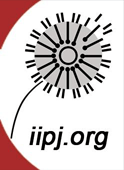Article Title
Working With an Aboriginal Community to Understand Drinking Water Perceptions and Acceptance in Rural New South Wales
Abstract
This study explored the Walhallow Aboriginal community’s experiences with drinking water to gain a shared understanding about community concerns and to develop ways to address these concerns together. There is a strong connection between people and water, as well as a need to appreciate the social factors associated with the unique cultural and socioeconomic factors that the provision of drinking water has for Aboriginal communities. We used a mixed method design within a community-based participatory action Research (PAR) framework. Water hardness and parental influence were the key factors associated with participants’ decisions to drink rainwater. This study provides important insights for water supply authorities when assessing health risks and when choosing appropriate mitigation measures for water quality improvement programs in Aboriginal communities.
Acknowledgments
We gratefully acknowledge the Walhallow community for their support and participation in the project and the contribution of our many participants in the study. We also thank the Walhallow Local Aboriginal Land Council for leading the study; A/Prof Michael Oelgemöller for funding the transcription of the questionnaire interviews and the New South Wales (NSW) Forensic and Analytical Science Services for testing water samples; Dr Paul Byleveld, manager, Water Unit, Environmental Health Branch, NSW Health; Balaraju Thangamany, manager, Aboriginal Communities Water and Sewerage Program, NSW DPI Water.
Creative Commons License

This work is licensed under a Creative Commons Attribution-Noncommercial-No Derivative Works 4.0 License.
Recommended Citation
Jaravani, F. G.
,
Massey, P. D.
,
Judd, J.
,
Taylor, K. A.
,
Allan, J.
,
Allan, N.
,
Durrheim, D. N.
,
Oelgemoeller, M.
(2017).
Working With an Aboriginal Community to Understand Drinking Water Perceptions and Acceptance in Rural New South Wales. The International Indigenous Policy Journal, 8(3)
. Retrieved from: https://ir.lib.uwo.ca/iipj/vol8/iss3/4
DOI: 10.18584/iipj.2017.8.3.4
COinS

Disclaimer
This article may contain information obtained from deceased persons. The information could upset some people; however, the authors wish no disrespect or distress to the respective families and the community.
The views and positions expressed in this article are those of the authors and are not necessarily representative of NSW Health.